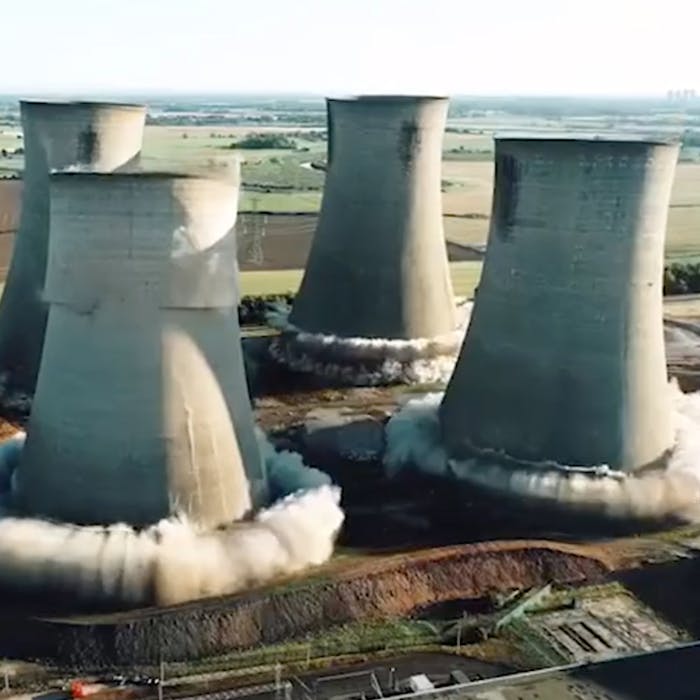
Cooling Towers - Falling Giants
Gigantic cooling towers built to go with coal fired power stations were once a familiar and distinctive part of the British landscape, but they are fast disappearing now, in a series of dramatic demolitions.
Some believe that they are a significant element of Britain's industrial history, but as none are officially protected by listing, it is estimated that they could all have disappeared within the next few years.
The rapid expansion of coal-fired electricity production began with the Edison Electric Light Station at Holborn viaduct in London.
These large heat generating facilities required an ability to cool the steam that was produced to drive the turbines.
Cooling towers, used to lower the temperature of water circulating through the heat exchangers, increased in size and number, with the growth of coal-fired electricity, becoming the most emblematic component of mid to late 20th-century fossil-fuel power stations. In the first years of the 20th century these were often rectangular, with timber, steel or ribbed reinforced-concrete walls, but from the 1920s the now-familiar hyperbolic reinforced concrete cooling tower began to be employed. Dutch engineers Frederik van Iterson and Gerard Kuypers patented the hyperboloid cooling tower in 1918. The UK saw the first tower being built in 1924 in Liverpool, to cool water used at a coal-fired electrical power station. This form offered numerous advantages in terms of maintenance, fire-resistance, longevity, structural strength and cooling efficiency.
As boiler and turbine capacity increased, cooling towers kept pace, enabling power stations to be sited on coalfields that other wise lacked plentiful supplies of cooling water.
Fossil fuel driven power began to be phased out towards the end of the twentieth century and its days are now officially numbered, with the commitment to tackle global warming and to decarbonate the ecomony. With power stations closed, their cooling towers became redundant, and have progressively been demolished, these events becoming dramatic TV content.
Notable destructions of cooling towers in recent years have included the four at Ferrybridge, West Yorkshire; Eggborough, North Yorkshire (pictured); Rugeley Power Station in Staffordshire; and Didcot in Oxfordshire.
The pace of removal now means that only a handful of such towers now remain including those at the last two functioning coal-powered stations in Britain - West Burton, Lincolnshire and Ratcliffe in Nottinghamshire.
Some campaigns have sought to preserve locally iconic towers, but so far none of the cooling towers has been given a secure future.
Further reading
Links to external websites are not maintained by Bite Sized Britain. They are provided to give users access to additional information. Bite Sized Britain is not responsible for the content of these external websites.
